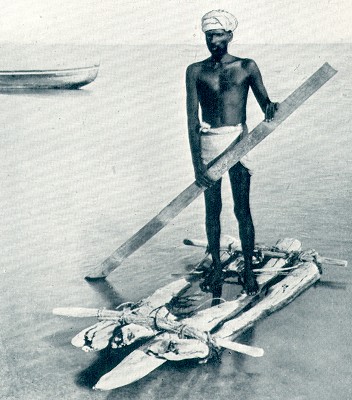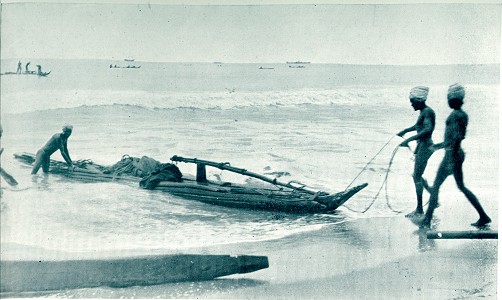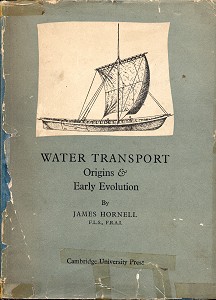
surfresearch.com.au
hornell : water
transport, 1946
| home | catalogue | history | references | appendix |
 |
surfresearch.com.au
hornell : water
transport, 1946
|
| PLATE
VIII, A.
A very primitive log raft use for reef fishing, Rameswaram Island, S. India. |
 |
| PLATE
X, A. A small fishing catamarran coming ashore through surf, Madras. |
 |
 |
Text-Fig. 32. The Als boat: A, diagrammatic transverse section amidships. B, transverse section near one end; the side strakes are omitted. C, method of sewing together the edges of two strakes, one overlapping the other. Lettering: a, vertical post or posts of a frame; b, a spreader; c, a rib; d, the notched lower end of (a); t, a thwart; gs, gunwale strake; bs, bilge strake; k, bottom or keel plank. (Original.) |
 |
Text-Fig. 34. Diagrammatic section, amidships, of the Nydam boat. (After H. Schetelig.) |
 |
TEXT-FIG. 36. Diagrammatic section, amidships, of the Gokstad Viking ship. (After H. Schetelig.) |
 |
Water Transport- Origins and Early Evolution. Cambridge University Press, Cambridge,1946. |

| home | catalogue | history | references | appendix |